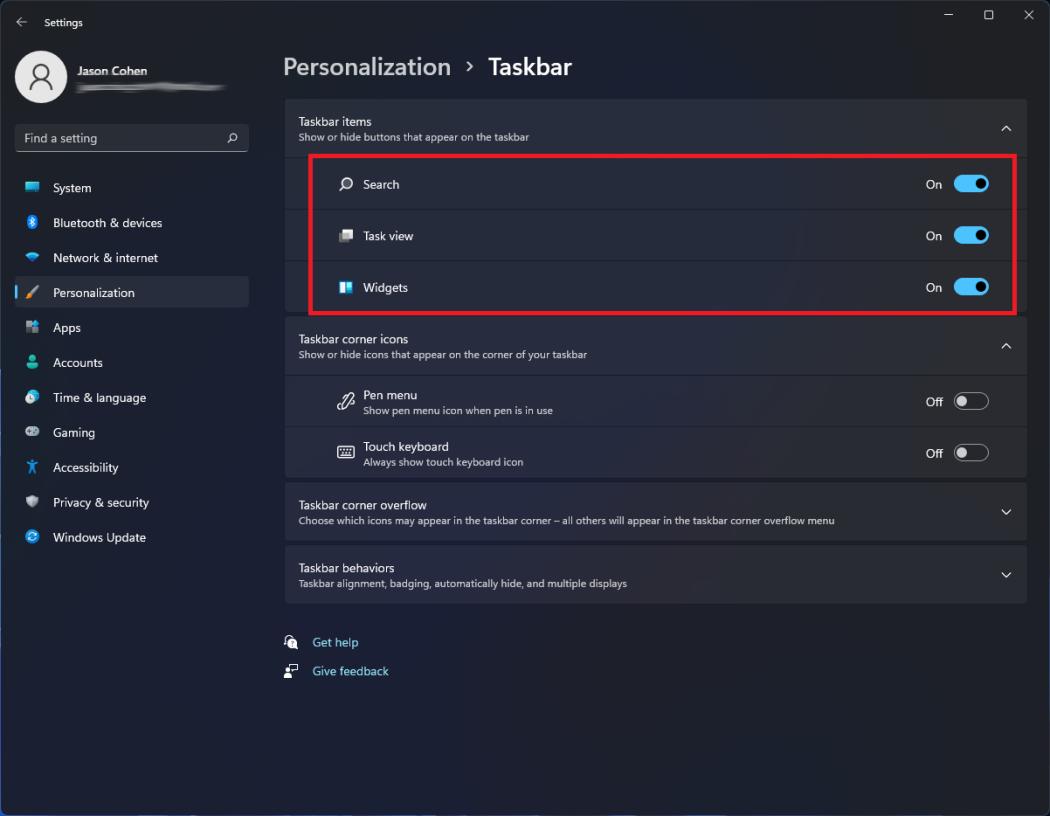Windows 11's Taskbar Puts App Icons Front and Center: Here's How to Customize It
The Windows taskbar is home to the Start menu and can be configured with your most-used apps. In the move to Windows 11, there are several notable taskbar changes. Your app icons are centered by default, icons are smaller, and a Quick Settings panel has been added.
Meanwhile, some of your favorite settings from Windows 10 didn't make the cut in Microsoft's new OS. You can no longer adjust the size of the icons, move the taskbar, or resize the taskbar. Despite this loss of control, there are still many way to customize the taskbar to your liking.
Pin to Taskbar
The taskbar comes with several apps already pinned to the taskbar, but you can add more. Open a program and right-click on the icon, then select Pin to taskbar. If you change your mind, just right-click it and select Hide from taskbar.
Remove Windows 11 Apps
Windows 11 adds three new icons to the taskbar. Search replaces the Windows 10 search bar, Desktops is the new Task View, and Widgets controls the new widget panel. If you don't want these icons taking up space in the taskbar, open Settings > Personalization > Taskbar and click Taskbar items. Turn off the switch next to the icon you want removed. You can also remove them by right-clicking the icon in the taskbar and selecting Hide from taskbar.

Move the Start Button
Perhaps the biggest change in Windows 11 is the fact that all your icons—including the Start button—are center-aligned on the taskbar by default. This may take some getting used to, or you could simply decide to change this alignment.
Open Settings > Personalization > Taskbar and open the Taskbar behavior menu. Change the Taskbar alignment option from Center to Left and all your icons, including Start, will be shifted to the left side of the taskbar.
4.5Outstanding$99.99 at DellSee It4.0Excellent$43.99 at AmazonSee It3.5Good$61.99 at AmazonSee It4.0Excellent$349.99 at AmazonSee It3.5Good$129.99 at Microsoft StoreSee It4.0Excellent$34.99 at AmazonSee It4.0Excellent$52.99 at AmazonSee It4.5Outstanding$16.99 at AmazonSee It See all (8 items)
Hide Taskbar
Windows 11 locks the taskbar by default, but if you prefer it to disappear when not in use, right-click the taskbar and choose Taskbar settings. Click Taskbar behaviors and check the box next to Automatically hide the taskbar.
Show Desktop
The small Show Desktop button in the far-right corner of the taskbar still exists in Windows 11, but there's no hover option available. Turn it off completely under Taskbar settings, where you'll uncheck the box that says Select the far corner of the taskbar to show the desktop.
Control Notifications
App notification badges are automatically turned on in Windows 11 so you can better see which programs are asking for your attention. You can turn this off, though, under Settings > Personalization > Taskbar > Taskbar behaviors and uncheck the box next to Show badges.
To turn off notifications for specific apps, go to Settings > System > Notifications. Disable the switch next to the entry of your choice to silence the app.
Customize the Taskbar Corner
Windows 11 gives you total control over the taskbar corner—the section of the taskbar that includes hidden control icons for various apps on your computer. Click the up arrow icon, and you might find icons for OneDrive, Windows Security, and any other apps you've downloaded.
You can pin some of these icons to the taskbar under Taskbar settings. Click Taskbar corner overflow and flip the switch for any icon you want locked to the right of the up arrow icon on the taskbar. There are additional items to add under the Taskbar corner icons section, including a Pen menu icon and Touch keyboard icon for adding stylus and keyboard controls.
Customize Quick Settings
The Quick Settings panel is moved out from the Action Center and combines the Wi-Fi, battery, and speaker settings into one button, similar to Apple's Control Center.
Click the Quick Settings section to open a menu that includes Wi-Fi, Bluetooth, airplane mode, battery saver, Focus Assist, and accessibility settings, as well as brightness and volume controls. To edit this panel, click the pencil icon.
You can then reorder or remove your quick settings. Click the Add button to include other settings buttons for controlling screen casting, keyboard languages, hotspots, nearby sharing, night light mode, and dual-monitor options.
Sign up for Tips & Tricks newsletter for expert advice to get the most out of your technology.
EmailThis newsletter may contain advertising, deals, or affiliate links. Subscribing to a newsletter indicates your consent to our Terms of Use and Privacy Policy. You may unsubscribe from the newsletters at any time.
Thanks for signing up!Your subscription has been confirmed. Keep an eye on your inbox!








